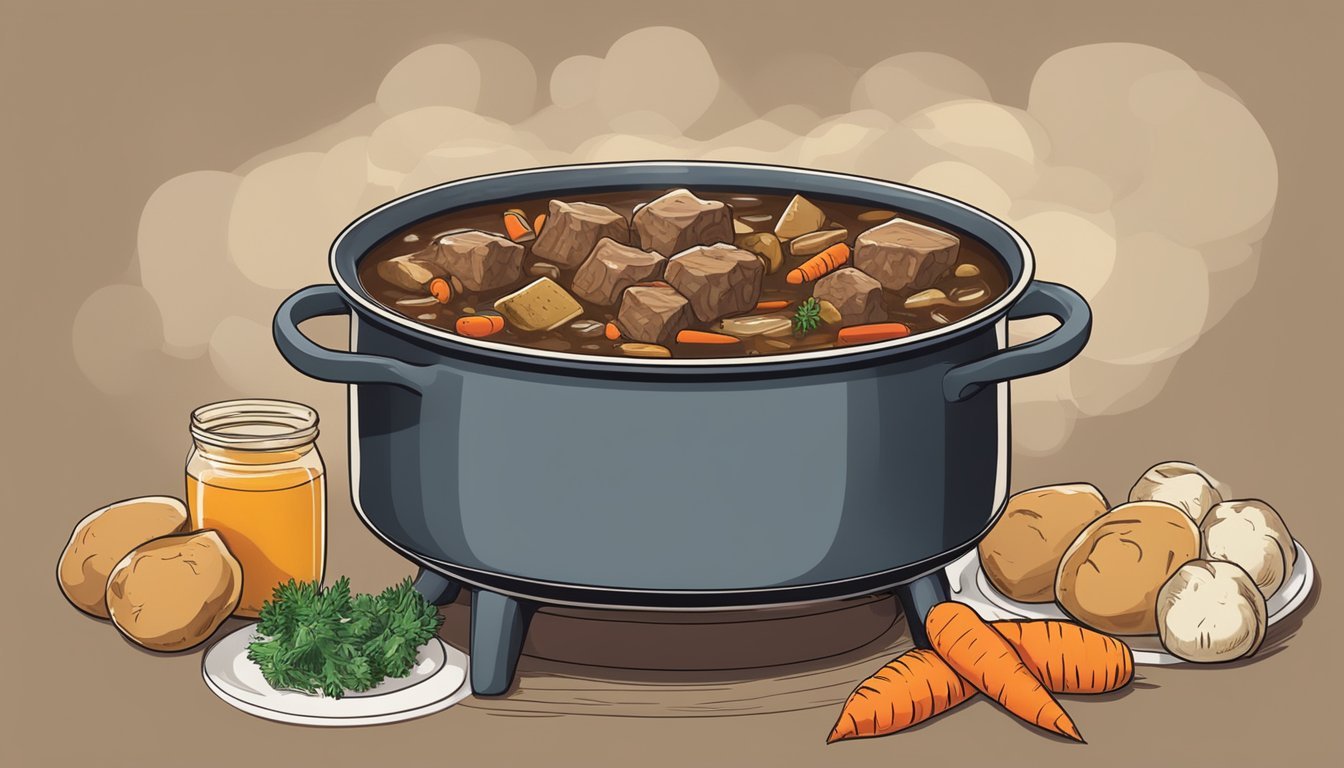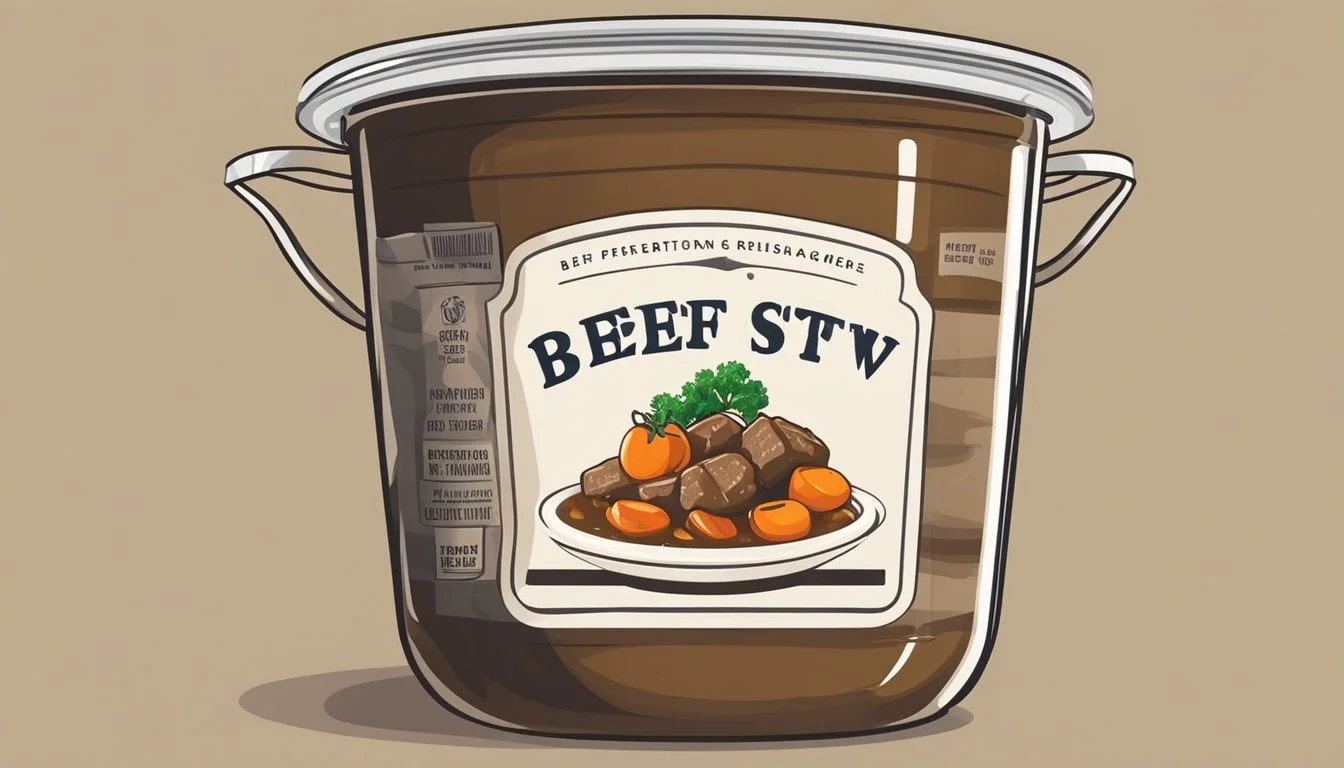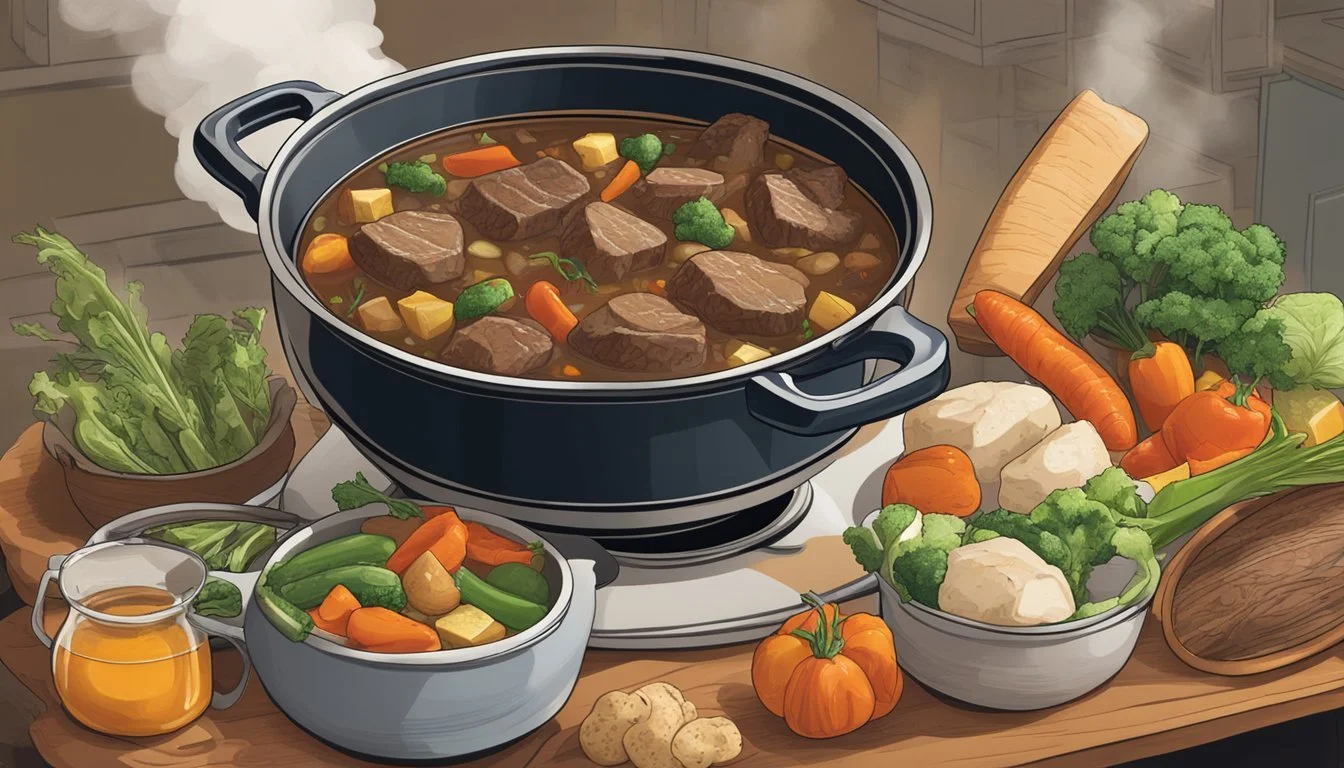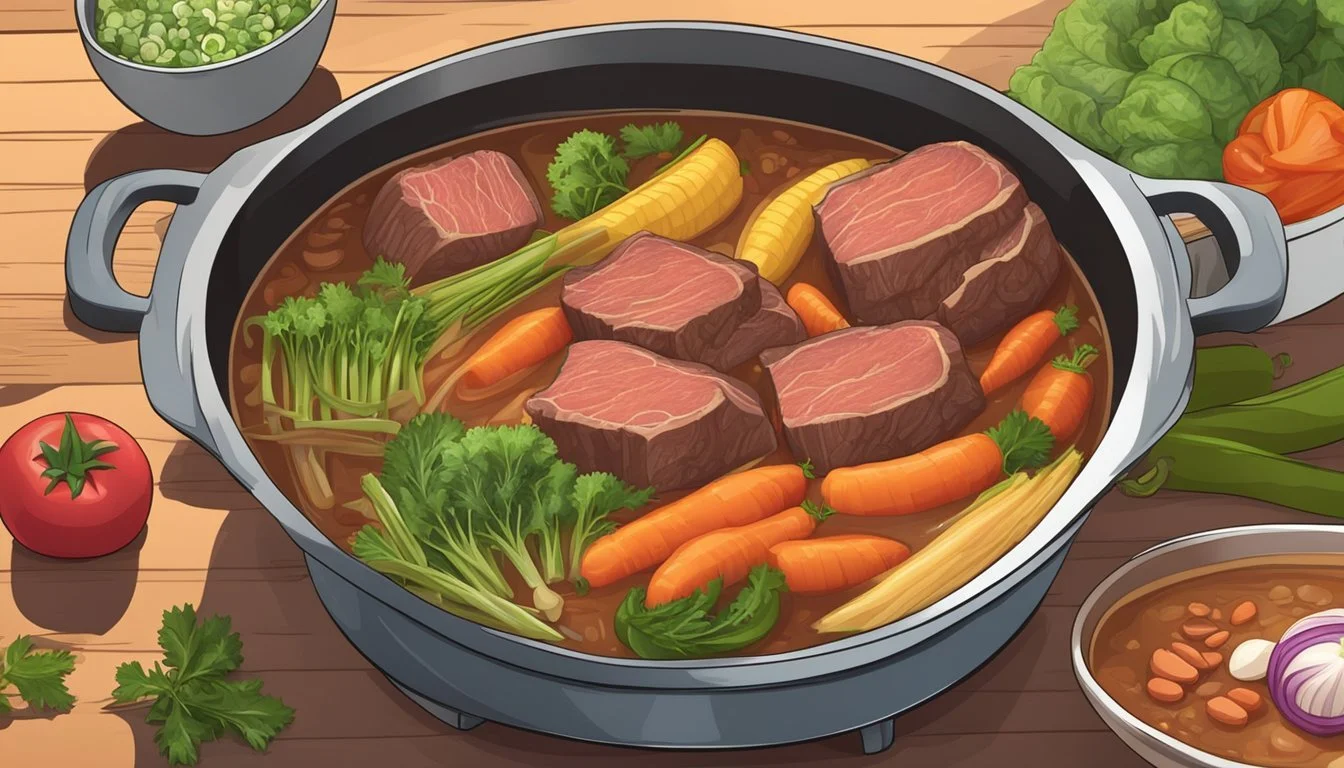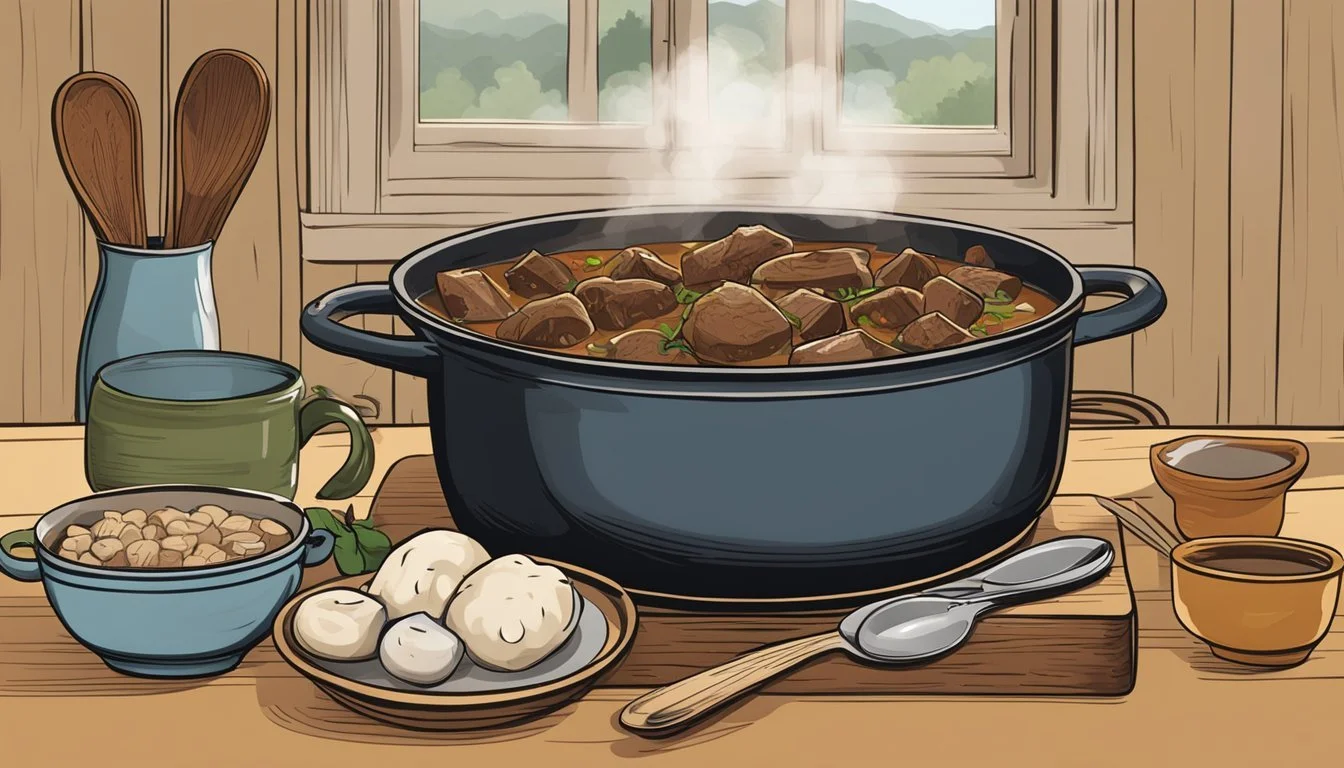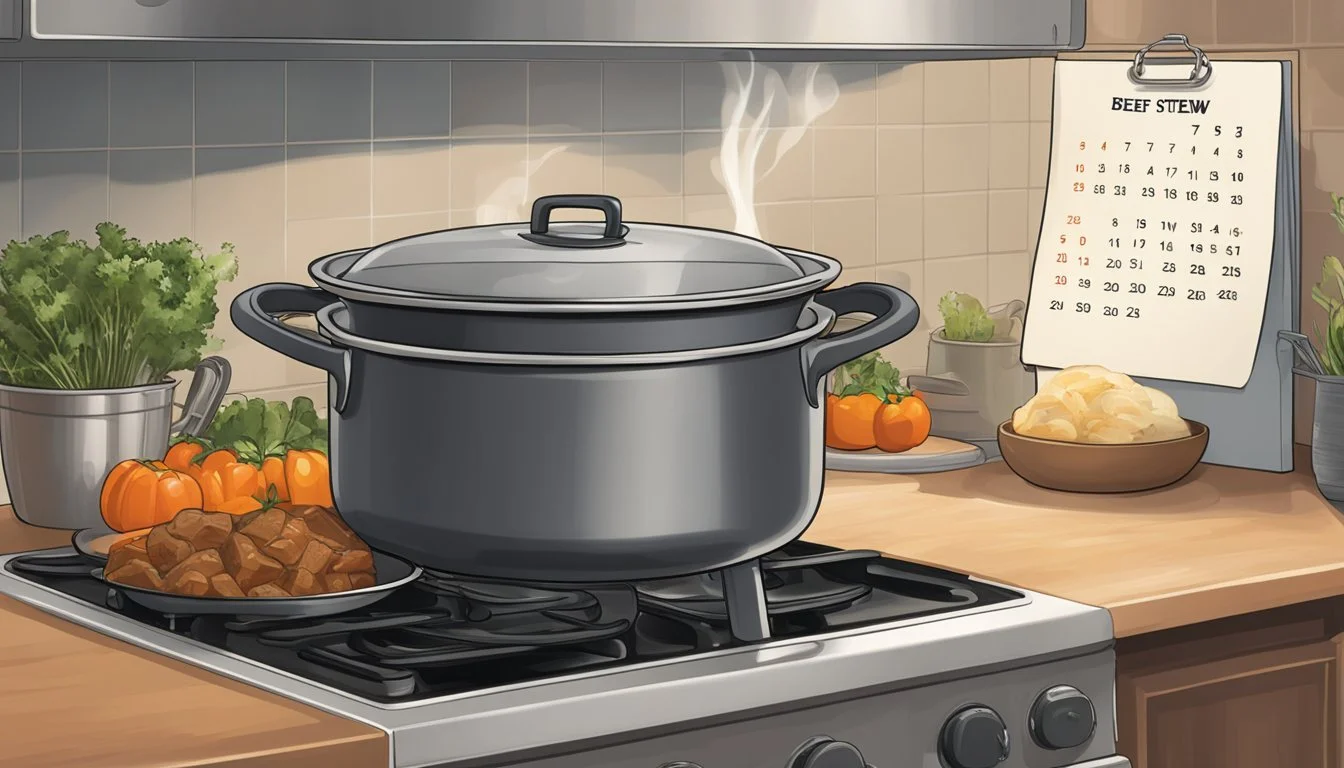How Long Does Beef Stew Last?
Storage Tips and Shelf Life
Beef stew is a beloved comfort food, often made in large batches and enjoyed over multiple meals. A common concern among home cooks is how long this hearty dish remains safe to eat. Cooked beef stew generally lasts in the refrigerator for 3 to 4 days, ensuring optimal freshness and safety.
Freezing extends the life of beef stew significantly, making it a great option if you don't plan on eating it all within a few days. When properly stored in airtight containers or freezer bags, beef stew can last up to three months in the freezer without compromising its taste and quality.
On the other hand, vacuum-sealing beef stew can offer even more longevity. In the fridge, vacuum-packed beef stew can last up to 1.5 weeks. This method not only preserves the stew but also helps retain its flavor. Knowing these storage tips ensures that you can enjoy your homemade beef stew safely and deliciously, whether it’s next week or a few months from now.
Determining Beef Stew Shelf Life
Proper storage conditions are crucial to maintain the quality and safety of beef stew. The shelf life can vary significantly based on whether the stew is refrigerated, frozen, or left at room temperature.
In the Refrigerator
Beef stew stored in the refrigerator has a limited shelf life. It is recommended to consume the stew within 3 to 4 days. Refrigeration slows down the growth of harmful bacteria but does not stop it completely.
Always store beef stew in airtight containers to minimize exposure to air and contaminants. Labeling the containers with dates can help track how long the stew has been stored. Keeping the fridge temperature at or below 40°F (4°C) is key to extending the stew’s freshness.
In the Freezer
Freezing beef stew significantly extends its shelf life. When properly stored, it can last up to three months. Use freezer-safe containers or bags to prevent freezer burn, which can affect the texture and flavor of the stew.
Make sure to remove excess air from the containers before sealing. Label the containers with the date of freezing to monitor how long the stew has been stored. It's best to freeze beef stew in individual portions for easy reheating.
At Room Temperature
Leaving beef stew at room temperature is not advisable. Perishable foods like beef stew are prone to bacterial growth when left out. Harmful bacteria can begin to multiply rapidly within 2 hours, and even faster if the temperature is above 90°F (32°C).
If beef stew is left out overnight, it should be discarded to avoid the risk of foodborne illnesses. Following proper food safety practices ensures the stew remains safe to eat. This involves refrigerating or freezing the stew promptly after it has cooled down.
By adhering to these storage guidelines, one can ensure that beef stew is both safe and enjoyable to consume for as long as possible.
Optimal Storage Methods
Proper storage of beef stew is essential for maintaining flavors and freshness. Key methods include using airtight containers, ensuring the stew cools down adequately, and implementing effective labeling and meal prep strategies.
Using Airtight Containers
Airtight containers are crucial for preserving the quality of beef stew. These containers prevent moisture and contaminants from entering, reducing the risk of mold growth and maintaining food safety. Choose containers made of plastic, glass, or stainless steel that seal tightly. Ensure the lid fits securely to keep air out. When properly sealed, stew stored in the refrigerator can last 3-4 days. For longer storage, place the containers in the freezer, where beef stew can stay good for up to 3 months. Always prioritize containers specifically designed for food storage to guarantee the best results.
Cooling Down Properly
Cooling down the beef stew properly before storing is vital to avoid bacterial growth. Hot food can raise the temperature in the refrigerator, putting other foods at risk. To cool the stew efficiently, first let it sit until it reaches room temperature. If you're in a hurry, transfer the stew into shallow containers to speed up the cooling process. Stirring occasionally can also help release heat more evenly. Once cooled, promptly transfer the stew into an airtight container and place it in the fridge or freezer. This method helps preserve the flavors and ensures food safety.
Labeling and Meal Prep
Labeling your containers with the date of preparation is essential for effective meal prep. This practice helps track the stew's freshness and ensures it is consumed within the safe period. Use labels that can withstand cold environments, whether in the fridge or freezer. Write the label clearly and attach it to the container's lid or side. In addition, portioning out meals in airtight containers during this process can save time. This makes it easy to grab a ready-to-eat meal, ensuring consistency in taste and texture. By maintaining an organized meal prep system, you can more efficiently utilize your stored beef stew.
Safety and Quality Considerations
Storing beef stew properly is crucial to prevent spoilage and ensure it remains safe to eat. Key considerations include recognizing spoilage, effective reheating methods, and preventing bacterial growth.
Recognizing Spoilage
Recognizing when beef stew has gone bad is fundamental for food safety. Common signs of spoilage include an off smell, which could be sour or rancid. Visual cues such as a slimy texture or strange discoloration often indicate the stew is no longer safe to eat.
Discolored patches or a change in consistency can also be red flags. If any of these signs are present, it's best to discard the stew immediately to avoid the risk of food poisoning.
Reheating Leftovers
Proper reheating is essential for maintaining both the safety and quality of leftover beef stew. The stew should be reheated to an internal temperature of 165°F (74°C) to ensure any potentially harmful bacteria are killed.
The stovetop method is often preferred, as it allows for gradual and even heating. For convenience, the microwave can also be used, although it may result in uneven heating. Stirring the stew occasionally ensures even heat distribution, minimizing the risk of cold spots where bacteria could survive.
Preventing Bacterial Growth
Preventing bacterial growth begins with correctly handling leftovers. Beef stew should be cooled and placed in the refrigerator within two hours of cooking. Storing the stew in airtight containers helps reduce moisture loss and contamination.
The refrigerator should be kept at a temperature of 40°F (4°C) to minimize bacterial growth. For long-term storage, freezing the stew at 0°F (-18°C) is effective in preserving it for up to three months while maintaining quality. Following these steps significantly reduces the risk of foodborne illnesses.
Impact on Beef Stew Ingredients
Beef stew's storage affects meat texture, vegetable integrity, and the broth's consistency. Different cooking methods, refrigerating, and freezing all play roles in these changes.
Effect on Meat and Vegetables
Meat: Over time, refrigerated meat can lose its tenderness and become tougher. This is especially true after reheating. When cooked, beef can initially be very tender, but prolonged storage can change this quality.
Vegetables: Vegetables like carrots and potatoes can become mushy when stored in the stew for several days. Their textures degrade more quickly than the meat. Adding delicate vegetables like peas only before serving can help maintain their integrity.
Changes in Broth and Additives
Broth: The broth can thicken after cooling, mainly due to the fat content congealing. This can lead to a richer texture but may also cause separation, requiring thorough stirring when reheating.
Additives: Additions such as flour or cornstarch for thickening might clump or settle at the bottom. Refrigeration can sometimes intensify flavors as the ingredients meld together over time, enhancing the dish.
Influence of Cooking Methods
Slow Cooker: Using a slow cooker can make both the meat and vegetables very tender initially. However, when storing the stew, elements cooked for long periods might degrade faster in texture.
Homemade vs. Commercial: Homemade stews often lack preservatives, making their shelf life shorter compared to commercial variants. This influences how quickly both the meat and vegetables may spoil or lose quality.
Different cooking methods and storage conditions must be carefully managed to maintain the delicious nature of beef stew, ensuring its flavors and textures remain appealing.
Best Practices for Freezing and Thawing
Properly freezing and thawing beef stew helps maintain its texture and quality, ensuring a safe and tasty meal when you're ready to consume it.
Freezing Individual Portions
When freezing beef stew, it's important to divide it into individual portions. Allow the stew to cool completely to prevent ice crystals from forming, which can negatively affect texture. Use airtight, freezer-safe containers or bags and leave a small amount of space at the top, as the stew will expand when frozen.
Label and date each container to keep track of storage times, ensuring that the stew is consumed within 2-3 months for optimal quality.
Thawing Techniques
For safe thawing, transfer frozen stew to the refrigerator and let it thaw overnight or for at least 8 hours. This method best maintains the stew's texture and quality. Alternatively, use the defrost setting on a microwave, reheating in short intervals and stirring in between to ensure even thawing.
Once thawed, the stew should be heated to at least 165°F (74°C) before consumption. Avoid refreezing previously thawed stew to minimize risks of bacterial growth and ensure safety.
Frequently Asked Questions
Beef stew storage and safety are crucial for ensuring it remains safe and high in quality. Understanding how long it can be stored, recognizing signs of freezer burn, and knowing the risks of consuming expired stew are essential.
How Long Can It Stay After Cooking?
Cooked beef stew can be safely kept in the refrigerator for 3 to 4 days. Beyond this period, the stew's quality and safety may decline, making it unsafe to eat.
Long-term storage is best achieved through freezing. Frozen beef stew can last up to 3 months. Proper storage involves placing the stew in an airtight container or a freezer bag and removing excess air to prevent freezer burn.
How to Spot Freezer Burnt Stew?
Freezer burn occurs when food loses moisture while frozen. Signs include discoloration and ice crystals on the surface of the beef stew.
Affected areas may appear grayish-brown or have a rough texture. Using the senses, freezer burnt stew may taste bland or off, even if it's technically safe to eat, thus compromising the overall quality.
Risks of Consuming Expired Stew
Eating expired beef stew poses significant health risks. Bacterial growth can make the stew unsafe to consume, leading to foodborne illnesses like salmonella or E. coli.
Symptoms may include nausea, vomiting, diarrhea, and abdominal pain. Heed USDA guidelines on food safety to avoid such risks. Proper storage and timely consumption are key to preventing these health risks.
Conclusion
Beef stew can be stored safely in the refrigerator for 3-4 days. Using fresh ingredients and maintaining proper food safety standards are crucial to ensure its longevity.
For longer storage, freezing is an excellent option. Transfer the beef stew to an airtight container or a freezer bag, removing any excess air to prevent freezer burn. In the freezer, beef stew can last up to 3 months.
Key points to remember:
Refrigerate within 2 hours of cooking.
Store in airtight containers.
Reheat gradually over low heat to maintain flavor.
By following these guidelines, beef stew can be enjoyed safely and at its best quality.

